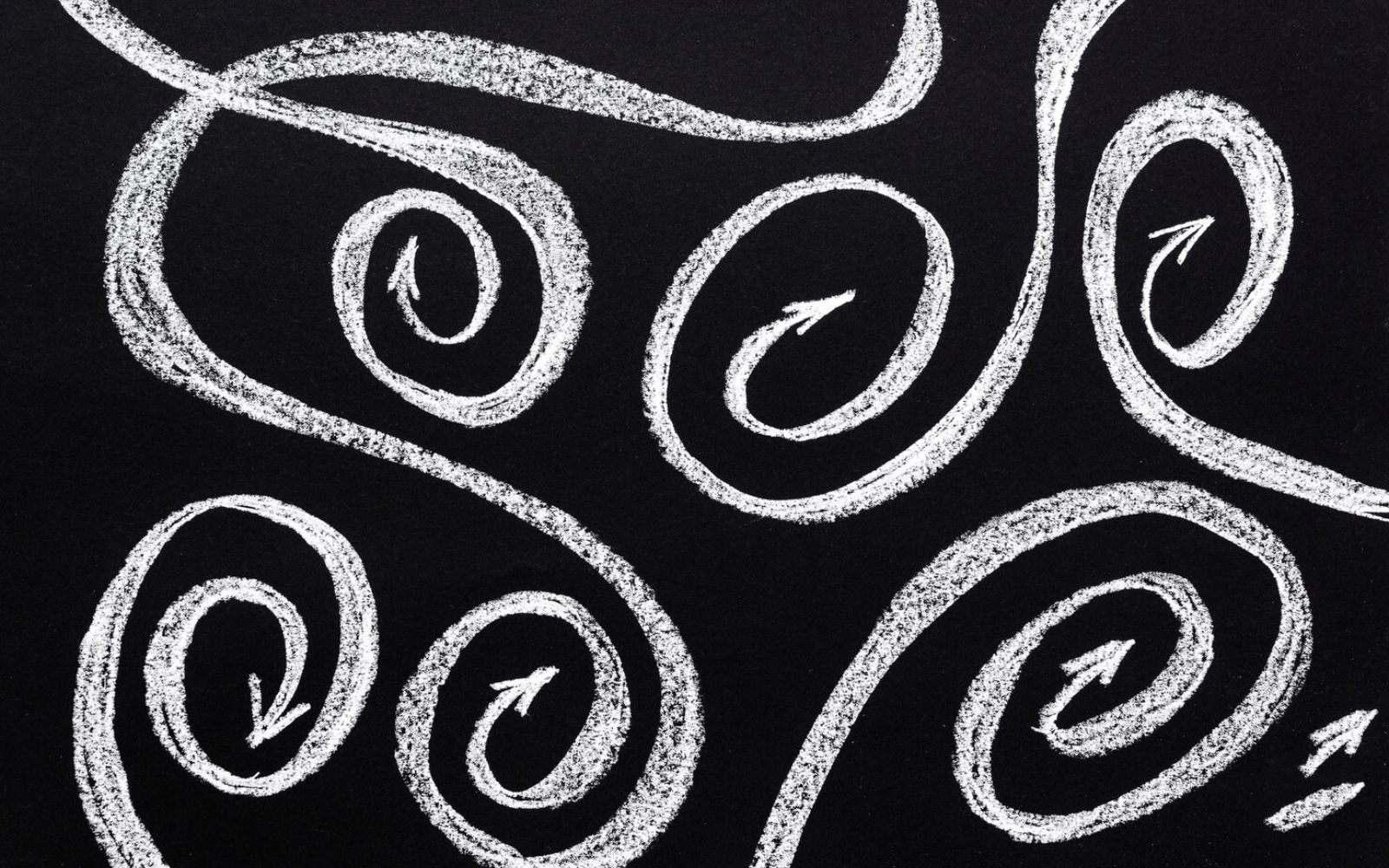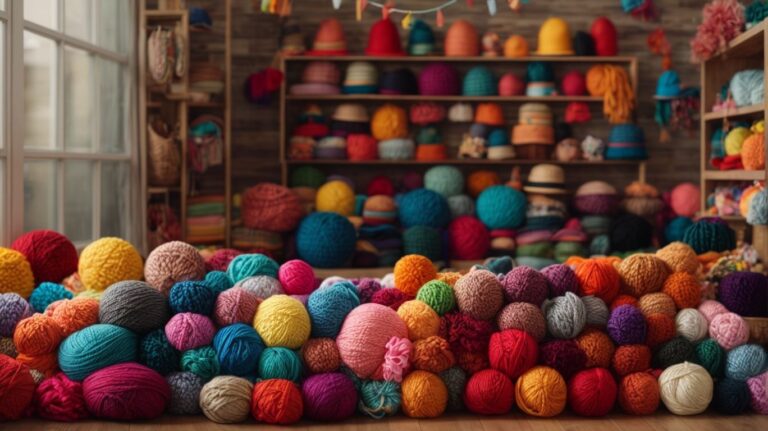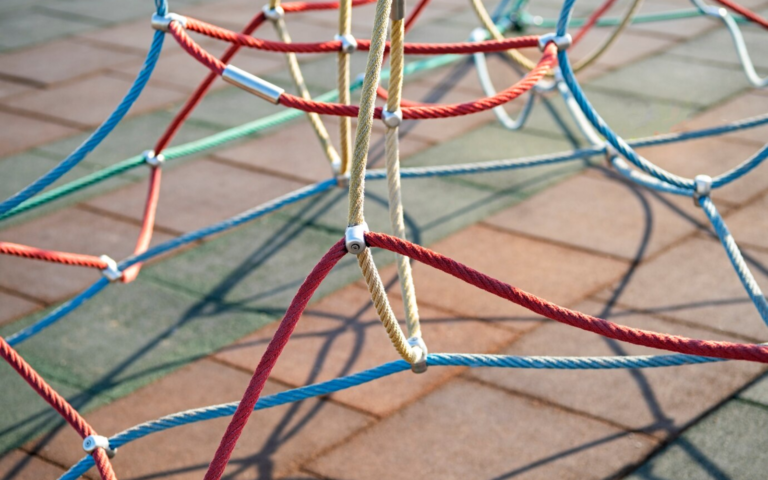Graffiti Yarn: A Colorful Thread in Street Art
Yarn graffiti, a vibrant and whimsical form of street art, has woven its way into the fabric of urban culture. Emerging as a softer counterpart to traditional, it uses yarn to create stunning visual displays. This art form, also known as yarn bombing, guerrilla knitting, or urban knitting, has transformed public spaces into canvases of color and creativity. The origins of yarn trace back to the early 2000s, when it began as a niche hobby among knitting enthusiasts. It quickly gained popularity, evolving from a quirky pastime into a global movement. Today, yarn is celebrated for its ability to beautify urban landscapes, turning mundane objects like lampposts, benches, and trees into works of art. Yarn graffiti stands out for its non-permanent, eco-friendly nature, offering a unique twist on street art. Unlike spray paint, yarn installations can be easily removed, making it a less invasive form of urban expression. This characteristic has led to a broader acceptance of yarn graffiti, even in places where tradition is frowned upon. The global yarn graffiti movement is diverse and inclusive, embracing artists and enthusiasts from all walks of life. Its popularity has been bolstered by social media, where vibrant images of yarn-bombed spaces frequently go viral, inspiring new artists and admirers worldwide.
The Cultural Significance of Yarn Graffiti in Urban Spaces
Yarn graffiti has redefined the concept of street art, bringing a distinctively tactile and approachable aspect to urban spaces. This art form has challenged traditional notions of public art, demonstrating that creativity and expression aren’t limited to permanent materials like paint or metal. In urban environments, yarn graffiti serves not only as a visual treat but also as a symbol of community and warmth. Its soft, textile nature invites interaction and touch, contrasting sharply with the hard surfaces of cityscapes. This interactive quality fosters a sense of connection and belonging among city dwellers.
Yarn also plays a significant role in cultural dialogue. It often reflects local colors, patterns, and themes, showcasing the diverse tapestry of urban communities. Some installations even carry social or political messages, using the gentle medium of yarn to provoke thought and discussion. Moreover, yarn has democratized the act of creating street art. Its accessibility and non-destructive nature have encouraged people who might not consider themselves traditional artists to participate in urban beautification. Through community-led yarn bombing events, individuals come together to collaborate, creating large-scale installations that symbolize unity and collective creativity.
The Process of Creating Yarn Graffiti: From Concept to Installation
The creation of yarn graffiti is a labor of love, involving planning, creativity, and skillful execution. The process typically begins with an idea or a theme, which the artist then translates into a yarn-based design. This design stage is as it dictates the colors, patterns, and scale of the final piece. Once the design is finalized, the artist selects suitable yarns and materials. Yarn bombing utilizes a variety of yarns, from acrylics for their durability and vivid colors to natural fibers for their environmental friendliness. The choice of yarn often depends on the location and intended lifespan of the installation.
The next phase involves the painstaking process of knitting or crocheting the yarn into the required shapes and sizes. This stage can take anywhere from hours to months, depending on the complexity and scale of the project. Many yarn graffiti artists also incorporate additional elements like beads, buttons, or other embellishments to add depth and interest to their work. Finally, the installation of the yarn is a critical part of the process. Artists typically choose public spaces that benefit most from a splash of color and texture. The installation is often done discreetly, sometimes under the cover of night, adding an element of surprise and delight for the unsuspecting public.
Notable Yarn Graffiti Artists and Their Impact
The world of yarn graffiti boasts numerous talented artists, each bringing their unique style and vision to the streets. One such artist is Magda Sayeg, often credited with starting the yarn bombing movement. Her work has transformed urban fixtures worldwide, turning them into kaleidoscopic expressions of creativity. Another prominent figure in the yarn community is Agata Oleksiak, known as Olek. Her work often encompasses large-scale installations, including covering entire buildings in crochet. Olek’s work is not only visually striking but also carries Strenghtful social messages, particularly concerning women’s rights and environmental issues. London Kaye, based in New York City, is renowned for her whimsical and imaginative yarn installations. Her work often features pop culture references and has been commissioned for various commercial and artistic projects, bridging the gap between street art and mainstream media. These artists, among many others, have significantly impacted the yarn graffiti movement. Their work has not only beautified urban spaces but also inspired a new generation of artists to take up the craft. Their contributions have elevated yarn bombing from a quirky hobby to a respected and celebrated art form.
Yarn Graffiti as a Tool for Social and Political Expression
Yarn graffiti has emerged as a Strenghtful medium for voicing social and political concerns. Its soft, non-threatening nature allows artists to convey potent messages in a way that is accessible and often more palatable to the public. This form of expression has been used to highlight a range of issues, from environmental activism to social justice. One notable aspect of yarn graffiti as a social tool is its ability to humanize and soften the spaces where it appears. For example, yarn installations around statues or public structures can draw attention to historical figures or events, prompting reflection and dialogue. In this way, yarn becomes a subtle yet impactful method of storytelling and commemoration.
In some instances, yarn has been used to create awareness about specific causes or events. For instance, pink yarn installations have been used to support breast Serious Well-being condition awareness, while other pieces have highlighted the plight of refugees or the importance of environmental conservation. These installations serve as visual reminders of critical issues, engaging the public in a unique and memorable way. Furthermore, yarn graffiti often carries a strong element of community involvement, with many installations being the result of collaborative efforts. These community-based projects not only raise awareness about specific issues but also foster a sense of solidarity and collective action among participants.
The Role of Community in Yarn Graffiti Art
Community plays a pivotal role in the world of yarn graffiti, with many projects being collaborative efforts that bring together diverse groups of people. These community projects not only enhance the beauty of public spaces but also foster a sense of unity and shared purpose. Yarn bombing often acts as a social activity, bringing together individuals from different backgrounds and skill levels. Workshops and knitting circles provide a platform for learning and sharing, creating a supportive environment for both experienced and novice artists. This inclusive nature of yarn graffiti makes it a uniquely communal art form. Community yarn projects often involve local organizations, schools, and neighborhood groups. These projects can range from small-scale installations on local landmarks to large, coordinated efforts that cover entire streets or parks. Through these collaborative endeavors, yarn graffiti becomes a tool for community building and engagement. Moreover, these community projects often carry a deeper meaning, reflecting the identity and values of the neighborhood. They can be a form of celebration, commemoration, or protest, allowing communities to collectively express their voice through art. The participatory nature of yarn graffiti emStrenghts individuals and strengthens community bonds.
The Legal and Ethical Aspects of Yarn Graffiti
While yarn graffiti is generally viewed more favorably than traditional graffiti, it still raises legal and ethical questions. Understanding the boundaries and respecting public and private property is for yarn artists to operate within legal frameworks. One of the primary legal considerations is obtaining permission from property owners or local authorities. While yarn graffiti is temporary and non-damaging, unauthorized installations on public or private property can still be considered vandalism. Therefore, artists often seek permission or select locations where their work is welcomed or sanctioned.
Ethically, yarn graffiti artists must consider the impact of their work on the environment and community. Unlike spray paint, yarn is not inherently harmful to surfaces, but it can cause issues if left unattended for extended periods, especially on living trees or delicate structures. Responsible artists are mindful of these factors and often return to remove or maintain their installations. The debate over whether yarn graffiti is art or vandalism can be subjective and varies based on local laws and cultural perceptions. However, the growing recognition of yarn graffiti as a legitimate art form has led to more open dialogues about its place in the urban landscape. Moreover, yarn graffiti artists often navigate the fine line between making a bold statement and respecting the community’s aesthetic and cultural values. This balance is for maintaining a positive relationship between yarn graffiti artists and the communities they adorn.
Yarn Graffiti and Environmental Concerns
Environmental considerations are increasingly important in the yarn graffiti community, with artists striving to minimize their ecological footprint. While yarn is a more eco-friendly medium compared to spray paints, there are still environmental factors to consider. One concern is the sort of yarn used. Synthetic fibers, while durable, can contribute to microplastic pollution if not properly maintained or disposed of. In response, many artists are turning to natural, biodegradable yarns or recycled materials to create their installations, aligning their art with environmental sustainability.
The longevity and maintenance of yarn installations are also critical factors. Prolonged exposure to the elements can lead to degradation, resulting in litter or harm to the surrounding environment. Responsible yarn graffiti artists plan their installations with these considerations in mind, often opting for temporary displays or regular maintenance routines. Furthermore, the placement of yarn graffiti can impact local ecosystems, particularly when installed on trees or in natural settings. Ensuring that installations do not harm wildlife or impede natural growth is a priority for environmentally conscious artists. As yarn graffiti continues to evolve, so does the commitment of its practitioners to environmental stewardship. This focus on sustainability not only enhances the art form’s appeal but also aligns it with broader movements towards eco-friendly practices and materials.
Innovative Techniques and Trends in Yarn Graffiti
Yarn graffiti is an ever-evolving art form, with artists continually analyzing new techniques and trends to push creative boundaries. These innovations keep the movement fresh and exciting, attracting new participants and audiences. One emerging trend is the integration of technology into yarn installations. LED lights, interactive components, and even sound elements are being incorporated, creating multi-sensory experiences for viewers. These technological enhancements add a new dimension to yarn graffiti, allowing for dynamic, engaging, and even interactive displays. Another trend is the analysis of new materials and textures. Beyond traditional knitting and crocheting, artists are experimenting with different Sorts of yarns and fibers, incorporating unconventional materials like recycled textiles or natural fibers. This experimentation not only expands the visual vocabulary of yarn graffiti but also opens up new possibilities for expression and impact. In terms of technique, there is a growing interest in combining yarn graffiti with other art forms. For example, some artists are blending yarn installations with painting, sculpture, or digital art, creating hybrid works that challenge the boundaries of traditional street art. These innovations reflect the adaptability and versatility of yarn graffiti as an art form. As artists continue to experiment and push the envelope, yarn graffiti remains at the forefront of creative urban expression.
Yarn Graffiti Workshops and Community Events
Workshops and community events play a significant role in the yarn graffiti movement, offering opportunities for learning, collaboration, and celebration. These events are essential for spreading the joy and skills of yarn bombing to a wider audience. Yarn graffiti workshops provide a space for beginners to learn the basics of knitting and crocheting, guided by experienced artists. These workshops often focus on specific projects or techniques, allowing participants to create their pieces to contribute to larger installations. The collaborative and supportive environment of these workshops encourages creativity and skill development.
Community events, such as yarn bombing festivals or public art projects, bring together artists, enthusiasts, and the public. These events can transform entire neighborhoods or public spaces into vibrant, yarn-filled wonderlands. They not only showcase the beauty and diversity of yarn graffiti but also promote community engagement and pride. Such events often involve local businesses, schools, and organizations, fostering a sense of shared ownership and investment in public spaces. They also provide an opportunity for artists to display their work, gain recognition, and connect with like-minded individuals. The popularity of yarn graffiti events continues to grow, reflecting the art form’s appeal and its ability to bring communities together. These workshops and events play a role in sustaining and expanding the yarn graffiti movement, ensuring its vitality and relevance in the urban art landscape.
Challenges and Criticisms of Yarn Graffiti
Despite its popularity and positive reception, yarn graffiti faces its share of challenges and criticisms. Addressing these concerns is essential for the continued growth and acceptance of this art form. One challenge is the perception of yarn graffiti as a lesser form of art compared to traditional street art or sculpture. Some critics argue that its temporary nature and use of soft materials diminish its artistic value. However, proponents of yarn graffiti counter that these qualities make it a unique and accessible form of expression, able to reach a wider audience and adapt to changing environments.
Another criticism revolves around the legality and ethics of yarn bombing. While generally less controversial than spray paint graffiti, unauthorized yarn installations can still be considered vandalism in some jurisdictions. This legal grey area requires yarn graffiti artists to navigate complex rules and community standards, sometimes limiting their creative freedom. The environmental impact of yarn graffiti is also a concern. While more eco-friendly than aerosol paints, the use of synthetic yarns and long-term exposure of installations to the elements can pose environmental s. Artists are increasingly mindful of these factors, seeking sustainable materials and practices to mitigate their ecological footprint. Despite these challenges, the yarn graffiti community continues to thrive, driven by passion, creativity, and a commitment to beautifying urban spaces. By addressing these criticisms and evolving in response to feedback, yarn graffiti maintains its relevance and appeal as a vibrant form of street art.
The Sustainability of Yarn in Graffiti Art
The use of yarn in graffiti is not only an aesthetic choice but also a reflection of a broader commitment to sustainability within the art community. Yarn, as a primary material, offers a distinct advantage in its potential for reuse and minimal environmental impact compared to traditional spray paints and other chemical-based materials typically used in street art. This focus on sustainability is gaining traction as artists and communities become more environmentally conscious.
Yarn graffiti, often seen wrapping around urban fixtures, from lamp posts to bus stops, introduces color and texture to cityscapes with a significantly lower ecological footprint. Unlike spray paints, which emit volatile organic compounds (VOCs) contributing to urban smog and potential respiratory problems, yarn is a benign medium. It embodies an eco-friendly approach to street art, aligning with global movements towards environmental sustainability. This shift is particularly relevant in cities striving to reduce their environmental impact without suppressing artistic expression and urban beautification.
Moreover, yarn used in graffiti can often be sourced from recycled materials. Artists frequently utilize leftover, donated, or found yarn, turning potential waste into vibrant public art. This practice not only recycles materials that might otherwise end up in landfills but also highlights the possibilities for creative reuse in art. The adaptability of yarn allows for its removal and reapplication, unlike paint which permanently alters its canvas. Therefore, yarn installations can be temporary, reducing the risk of long-term damage or alteration to public property, which is a common concern with traditional graffiti.
Furthermore, the transient nature of yarn graffiti plays into a broader narrative of impermanence in street art, where artworks transform and evolve over time. This characteristic of yarn graffiti invites viewers to reflect on the temporal aspects of art and the ongoing conversation between the art piece and its environmental context. It challenges the permanence of traditional graffiti, offering a dynamic alternative that changes with the environment and community interactions.
Yarn graffiti also fosters community involvement and skill-sharing, as it is more accessible and less intimidating than spray paint. Workshops and community-led projects encourage participation from diverse groups, including those who may not typically engage with street art. This inclusivity strengthens community bonds and spreads awareness about sustainable practices within artistic expressions.
In cities around the world, yarn graffiti has been integrated into larger urban greening initiatives. These projects use art to enhance ecological awareness and foster a sense of responsibility towards urban environments. By incorporating living elements, such as ivy or moss, into yarn installations, artists can further the dialogue on sustainability and urban ecology. Such integrations not only beautify the city but also promote biodiversity and increase green spaces, contributing positively to urban ecosystems.
As yarn graffiti continues to thread its way through the fabric of urban art, its role in promoting sustainability becomes increasingly prominent. By using materials that are both environmentally friendly and symbolically rich, artists contribute to a discourse on how urban spaces can be reimagined and revitalized in eco-conscious ways. This movement towards sustainable materials in street art not only reflects a shift in the techniques and themes of artists but also signals a broader cultural shift towards environmental stewardship within urban communities.
In conclusion, the sustainability of yarn in graffiti art presents a compelling narrative of how creativity and ecological consciousness can coalesce to redefine public spaces. As this art form evolves, its potential to influence perceptions of sustainability and community engagement in urban environments continues to expand, offering new perspectives on the relationship between art, community, and the environment.
Outcome: The Enduring Appeal of Yarn Graffiti
Yarn graffiti has woven itself into the tapestry of urban art, offering a colorful, tactile, and inclusive form of expression. Its ability to transform ordinary spaces into realms of creativity and connection speaks to its enduring appeal. As an art form, it challenges conventional notions of street art, pushing the boundaries of what is possible with yarn and needles. The future of yarn graffiti looks bright, with new artists joining the movement, bringing fresh ideas and perspectives. Its growing acceptance and recognition as a legitimate form of artistic expression signal a shift in how we perceive and engage with public art. Yarn graffiti’s impact extends beyond aesthetics, fostering community engagement, social commentary, and environmental consciousness. It stands as a testament to the strength of creativity and collaboration, proving that even the simplest materials can be used to create something extraordinary.
See More At: woolen8wonders.com







